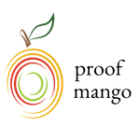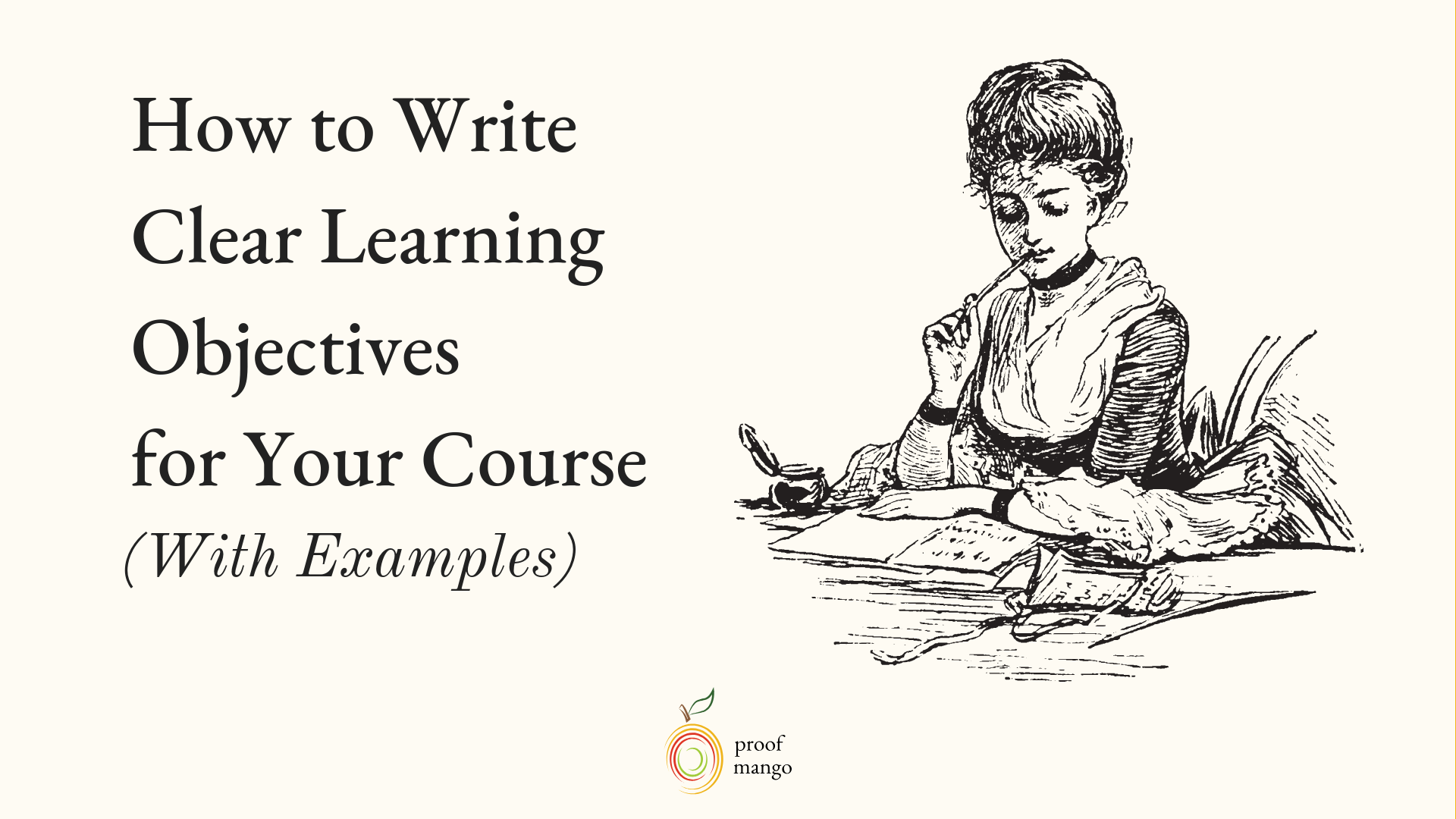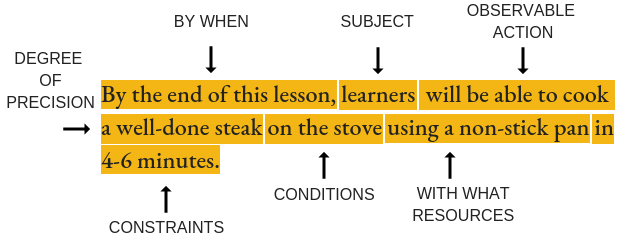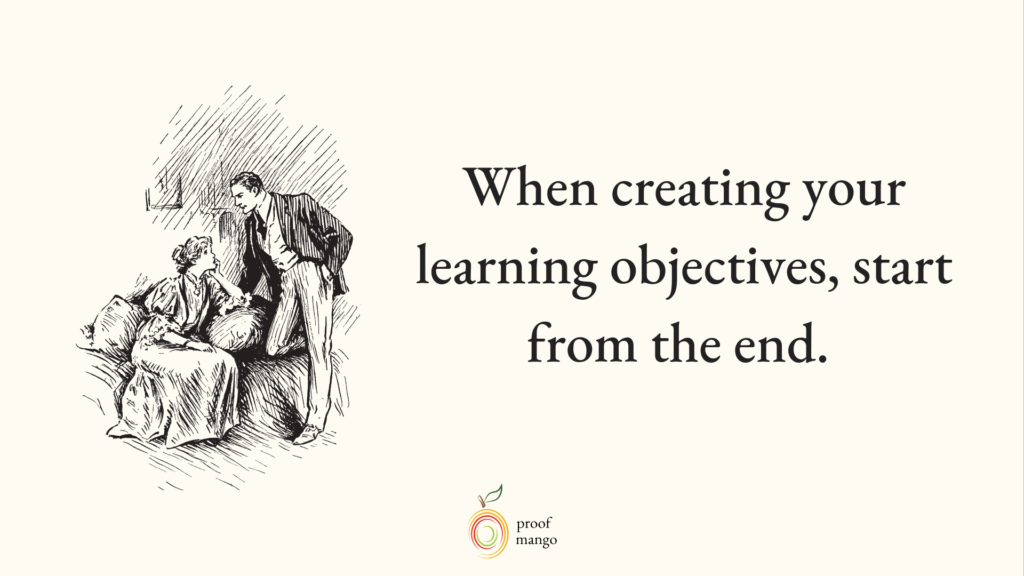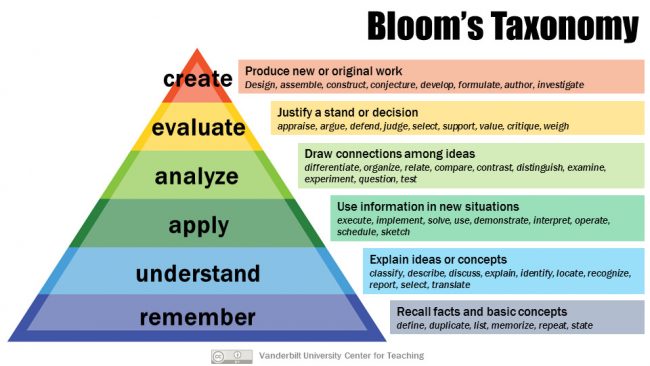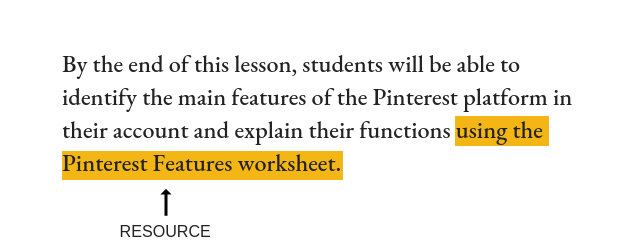The second online course I ever bought was Webinars that Convert by Amy Porterfield (now Digital Course Academy).
I was never so excited to dive into a course.
As I went through, I noticed that at the start of each video lesson, Amy would give a quick breakdown of what we were about to learn. She would say exactly what we would know how to do by the end of it.
And it was SO helpful.
I didn’t know it at the time, but these were her course learning objectives. These were what kept her course on track with its goals, and how she let learners know what they could expect for each lesson (and get excited about).
Learning objectives are massively helpful in guiding your students through each phase of your course. Without them, your students are disoriented and confused.
They're left wondering: Why am I learning what you're teaching and what's in it for me? Learning objectives help answer these questions.
Today we’re going to explain how to write learning objectives for your course with examples to help. We’ll also tell you what learning objectives are and the downside of not using them in your course.
Let’s jump in!
What is a Learning Objective?
A learning objective is a statement that tells your students what they will learn by the end of your lesson or course.
It’s like a promise you’re making to your students about what they’ll get.
It includes an observable action and a subject.
Specifically, learning objectives tell your students:
- What they will learn
- When they will learn it
- Under which conditions
- With what resources
- To what degree of precision
- Under what constraints
Here is a quick visual of what all of these components look like in an actual learning objective.
Not all learning objectives will have every one of the components above. Especially if your course doesn’t require them.
But the list above is what a typical learning objective would include if all of that information was applicable to your course lessons.
Overall, learning objectives are great for both the instructor and the learner. The learner knows what they’re getting into, and the instructor has a viable way to check for understanding when students finish their lessons.
What if I Don’t Have Learning Objectives in My Course?
Have you ever taken a course in school and wondered, am I ever going to need this information?
That’s what it’s like without learning objectives in your course. Your students are left wondering how your information is relevant to them.
Without learning objectives, students will always wonder what they’re learning and why they’re learning it. They just won’t know the point of your course.
And if you have quizzes in your online course, they’ll never know what questions might pop up or what they should know.
On top of that, neither you nor the student can be held accountable for whether or not learning was involved. Which leads to a messy course with no clear learning path.
How to Write Learning Objectives for Your Online Course
Now that you have an idea of how important learning objectives are in your course, let’s learn how to write them.
I’m going to take you through each step, using an example course titled How to Use Pinterest to Promote Your Blog.
Step 1: Create Your Course Learning Objective
It’s best to start from the end when trying to create your learning objectives.
First, ask yourself: what is my course’s main learning objective?
We want to break down our lesson learning objectives from there.
In order to figure out your course’s main learning objective, ask yourself:
- What’s the expected outcome of this course?
- What’s the goal?
- What will my learners gain from this course?
Since our example course is called How to Use Pinterest to Promote Your Blog, our main course objective could be something like:
By the end of this course, students will be able to create pins on Pinterest that engage their audience and drive targeted traffic to their blog.
Figure out what your overall course objective is before diving into the next step.
Step 2: Create Your Lesson Learning Objectives from Your Course Objective
Now that we have the end goal in mind, or rather, what we want our students to be able to accomplish by the end of our course, we can start creating our learning objectives for each lesson.
Ask: What does the student need to do, say, or perform to get to this end goal (main course objective)?
Once we figure this out, we can start creating our learning objectives for each lesson.
So using our course objective for our Pinterest course, we know that in order to create pins on Pinterest that engage and drive traffic, students will need to learn things like:
- How Pinterest works
- How to create and optimize their Pinterest profile
- How to design a pin that will encourage people to click on it
- What tools to use to design click-worthy pins
These would be our potential learning objectives for each lesson in our course. Once you have a few things listed, it’s time to write them clearly and correctly.
Step 3: Define your Subject and “By When”
Learning objectives always start out by identifying when a certain subject will learn something by.
The subject is your learner, AKA your student. The “by when” is the approximate time when the learner should be able to do whatever it is you’re teaching them.
For example, in my example Pinterest course, the subject is my students. And my “by when” is “by the end of this lesson”.
So if I’m crafting a learning objective for the first lesson I added to my bulleted list above, “How Pinterest works”, I’d start by saying “By the end of this lesson, students will be able to…”
This is how we’ll start writing our learning objective.
Just make sure you have your subject and “by when” due date ready to go before diving into the next step.
Step 4: Define Your Observable Action
So at this point, we have a potential first lesson (how Pinterest works). We also have the “by when” section, and we've identified our subject (students).
In order to finish up writing a clear learning objective, we need to make sure it has an observable action. It needs to have something that you, as an online teacher, can observe to confirm learning.
For example, if the goal of your lesson was to have students memorize every capital for every state in the U.S., an observable action would be to have them recite every capital for every state. That’s something you can observe to confirm learning.
So we need to define what our observable action would be for our lesson outcome.
In this case, we want students to learn how Pinterest works. How will we observe whether they learned how Pinterest works?
First, take a look at the six levels of learning from Bloom’s Taxonomy below:
(I promise, this isn't as confusing as it looks.)
Use each of Bloom's six learning levels above as places to pull your observable action words from.
For example, in order to confirm that my students understand how Pinterest works, I’ll pull my observable action word from the learning level “Understand” above.
In the chart above, some action words to use for “Understand” are classify, explain, identify, and locate.
So I’d write something like:
By the end of this lesson, students will be able to identify the main features of the Pinterest platform in their account and explain their function.
I’ve used two verbs that give an observable action: “identify” and “explain”. I can observe my students identify and explain something, so I know for sure that I can confirm their learning. If they can’t do that, I’ll know that at some point in my lesson, my teaching wasn’t as effective.
And I didn't have to over-think what word to use to measure learning. I just pulled from the most relevant learning level in Bloom's taxonomy.
Step 5: Add conditions, resources, degrees of precision, and constraints (optional)
The next few add-ons to your learning objectives are important, but I don’t think all learning objectives absolutely require them to be effective. But they're definitely helpful.
You could add on conditions, resources, degrees of precision, and constraints.
Conditions in your learning objectives are the conditions under which your observable action should be performed.
Should your students be learning how to cook your quiche recipe on low heat? What conditions are required to learn?
In terms of resources, you could add to your learning objective any resources required for the student to reach their learning goal. For example, we could add the following resource to our Pinterest learning objective below:
Degree of precision is another add-on, to create more specificity in your learning objective. What’s the level of precision or accuracy involved? Will they be learning how to swim 100 meters? Creating 3 customer avatars?
These are the questions to answer when adding on your degree of precision to your learning objective.
Constraints are what determine any limits you are adding to your learning objectives. Does the activity you’re teaching them have to be done in under 3 minutes? Can it be completed within 2 hours? What are the constraints?
Learning Objective Examples
To help you write better learning objectives for your course, take a look at the examples below. I’ve included a bad learning objective and a re-written one beneath it for reference.
Learning Objective #1: Complete the weight loss challenge.
Corrected: By the end of this training, you will complete the weight loss challenge and post your results in the Weight Loss Facebook group using the hashtag #myresults.
Learning Objective #2: You will better understand sales funnels.
Corrected: After this lesson is done, you’ll be able to discuss basic sales funnel concepts with our Sales Funnel Coaches, using the correct terminology.
Learning Objective #3: Gain an appreciation for poetry.
Corrected: At the end of this training, you’ll be able to discuss the different writing styles of five influential poets.
Learning Objective #4: By the end of this course, you’ll be able to increase your blog traffic by 20%.
Corrected: By the end of this course, you’ll be able to use Google Analytics to calculate any notable increase or decrease in blog traffic.
If you’re still looking for help writing your learning objectives, Easy Generator has a Learning Objective Maker that might help. You can plug in your verbs and it will create a ready-made learning objective for you to build off of.
Summary
Learning objectives cue your learners on what to expect in your course. You never want your students to feel lost, like they don’t know the point of your lesson or where you’re taking them. This can lead to bad course reviews and potential refund requests.
You always want your students to know what they're learning, and more importantly, why they're learning it.
To sum up:
- Learning objectives are statements that tell your students what they will learn by the end of your lesson or course.
- They should always include an observable action and a subject.
- Start at the end — figure out what your main course objective is, and break down your lesson learning objectives from there.
- Define your subject and the “by when” date that the learning should be completed.
- Use Bloom’s Taxonomy to review different learning levels and define your observable action — what action word describes whether or not students learned in your lesson? Think: recite, identify, explain.
- Conditions, resources, degrees of precision, and constraints are all optional add-ons for learning objectives.
I hope this post got you thinking a little more about how to write learning objectives for your course. Did you already have them before reading this? Is there any place you got stuck when creating them? Let me know in the comments!
